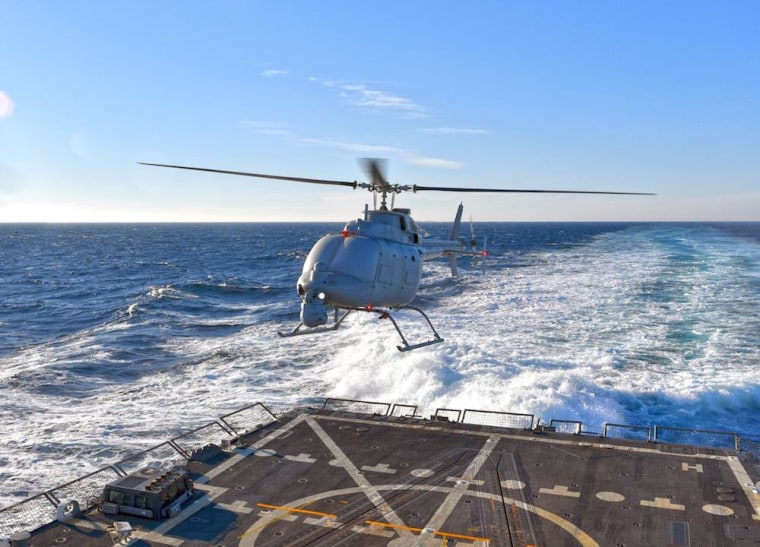Imagine trying to land a remote-controlled helicopter on top of a motorboat that's speeding across a lake. Now imagine that the helicopter is life size, the motorboat is a warship and the lake is the Atlantic Ocean. Navy pilots recently had to contend with just such a scenario as they tested the U.S. military's newest drone, the MQ-8C Fire Scout.
From a computer-filled control station aboard the USS Jason Dunham, the pilots successfully completed 32 takeoffs and landings with the new drone helicopter. The Navy conducted the tests, which ended Tuesday (Dec. 23), to assess the drone's capabilities in different wind conditions, and to see how well it could land on a ship moving at varying speeds, according to Navy officials. In addition to landing and taking off, the Fire Scout also completed three test flights, presumably traveling out of view of the USS Dunham and then returning to the ship.

"The MQ-8C Fire Scout's flights from the USS Dunham represent a significant Navy milestone. This is the first sea-based flight of the MQ-8C, and the first time an unmanned helicopter has operated from a destroyer," Capt. Jeff Dodge, Fire Scout program manager with Naval Air Systems Command (NAVAIR), said in a statement. Destroyers are typically smaller than other ships from which drones may be flown, such as aircraft carriers.
The Fire Scout is a modified version of a Bell 407 utility helicopter, an aircraft used by governments, militaries and private organizations around the world. But the MQ-8C and its predecessor, the smaller MQ-8B, don't have pilots in their cockpits. Instead, operators fly these helicopters remotely, from control stations located aboard ships or on land. [Rise of the Drones: Photos of Unmanned Aircraft]
The MQ-8B was first deployed by the U.S. Navy in 2009 and has since been used for intelligence, surveillance and reconnaissance missions. The MQ-8C is expected to serve a similar purpose. However, this newer aircraft can carry more weight than its predecessor (about 1,000 lbs., as opposed to 600 lbs.), and it can stay in the air longer than its smaller cousin — about 12 hours if it's carrying only 300 lbs. The MQ-8B can fly for only 5.5 hours at a stretch when carrying the same 300 lb. payload.
— Elizabeth Palermo, Live Science
This is an abbreviated version of a report from Live Science. Read the full report. Follow Elizabeth Palermo @techEpalermo. Follow Live Science @livescience, Facebook & Google+.